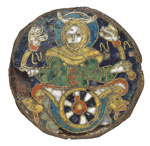Disclaimer: Early release articles are not considered as final versions. Any changes will be reflected in the online version in the month the article is officially released.
In 2024, a novel bacterial genus and species of the Pasteurellaceae family, Emayella augustorita, was presented by a team led by Sylvain Meyer from the University of Limoges in Limoges, France. E. augustorita is a fermentative, gram-negative organism and a commensal and common inhabitant of feline and canine oral cavities and upper respiratory tracts (Figure). This newly identified rod-shaped bacterium was isolated from blood cultures in a woman who had sepsis because of an infected metallic biliary stent.
As a nod to local heritage, in naming their discovery, the authors chose Emayella, which translates from Latin as enamel. Limoges is known for its artistic heritage, especially for enamel-painted metalwork dating to the Middle Ages. In the 18th Century, after a kaolin pit was discovered nearby, Limoges became an avatar of exquisite porcelain ware. The species epithet, augustorita, in honor of the Emperor Augustus, was the original name given to the town by its Roman founders, in 10 BCE. The Gaulish suffix –ritum (rito or ford) is a reference to the city’s location on a ford on the Vienne River. The name Limoges itself evolved from a Latin word, Lemovices, referring to a Gaulish tribe who armed themselves with spears fashioned from elm.







